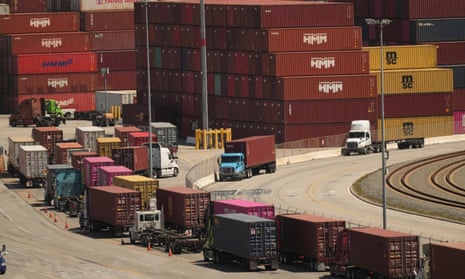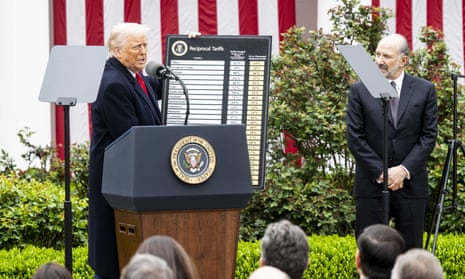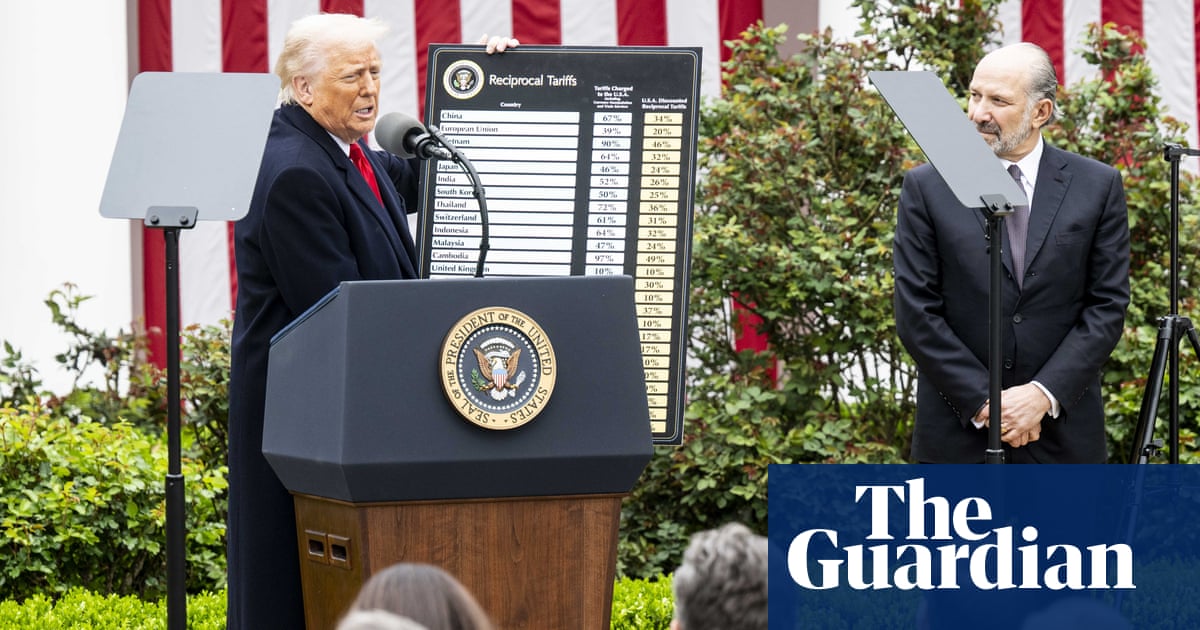## Trump’s Tariffs: A Game of Trade Wars with Georgia Holding the Winning (or Losing) Card
Remember that game of Risk where everyone’s trying to conquer the world, one territory at a time? Well, the real world is playing a similar game, and this time, “trade” is the weapon of choice. The Trump administration’s hefty tariffs, slammed down like a king’s gambit, are shaking up the global economy, and one state is feeling the heat more than most: Georgia.

The Guardian’s latest piece dives deep into the Peach State, exposing the very real fallout from these trade wars. We’re talking job losses, squeezed businesses, and a whole lot of uncertainty.

Georgia in Focus: A Case Study of How Trump’s Tariffs are Impacting US Businesses

As the Trump administration continues its aggressive trade policy, with tariffs levied against numerous countries, the real-world impact on American businesses is becoming increasingly apparent. One state that serves as a potent case study is Georgia, a state heavily reliant on international trade.
Georgia’s economy is deeply intertwined with global commerce, with key industries like agriculture, manufacturing, and logistics significantly affected by tariffs. For example, the state’s poultry industry, a major export sector, has faced increased costs due to tariffs imposed on Chinese imports of agricultural inputs, such as feed and fertilizer. These higher costs have squeezed profit margins and forced some poultry producers to cut back on production.
The automotive industry in Georgia, another vital sector, has also been impacted. With tariffs levied on steel and aluminum, the cost of producing cars in Georgia has increased. This has led to manufacturers considering shifting production to countries with lower input costs, potentially threatening jobs in the state.

S&P Surges: The Market’s Reaction and the Uncertain Future
In response to Trump’s announcements, the S&P 500 surged 9.5%, marking one of its biggest gains since World War II. This rally suggests that investors welcomed the tariff pause, viewing it as a de-escalation of trade tensions. However, the market’s reaction is complex and multifaceted.
The S&P 500, while up significantly, remained below its level before Trump’s initial tariff announcements. This indicates lingering uncertainty about the long-term impact of the trade war and the potential for further escalation. Furthermore, the market’s focus shifted to the 125% tariff increase on China, which raised concerns about the broader implications for global trade.

Beyond the Numbers: Real-World Stories of Businesses Navigating the Tariff Maze
While stock market indices provide a snapshot of the overall market sentiment, the real impact of tariffs is felt in the stories of individual businesses struggling to navigate the complex and often unpredictable landscape.
- Small businesses in Georgia, particularly those reliant on imports for raw materials or finished goods, face significant challenges. The increased costs associated with tariffs have squeezed their profit margins, forcing them to raise prices, cut back on investments, or even lay off employees.
- Manufacturing companies in the state are grappling with supply chain disruptions and increased input costs. Tariffs on steel and aluminum have made it more expensive to produce goods, leading to reduced competitiveness and potential job losses.
- Agricultural producers are facing challenges due to retaliatory tariffs imposed by trading partners. Georgia’s poultry industry, for instance, has suffered from higher costs for feed and fertilizer due to tariffs on Chinese imports.
- A negotiated settlement: Both the U.S. and China could agree to roll back tariffs and address underlying trade concerns through negotiations. This would be a positive outcome for the global economy, but it is not clear if it is achievable in the near term.
- Escalation of the trade war: The U.S. and China could continue to raise tariffs, leading to a broader trade war that would have significant negative consequences for both economies and the global economy as a whole.
- A shift in global trade patterns: As a result of the trade war, businesses could shift their supply chains away from the U.S. and China, leading to a more fragmented and less integrated global trading system.

The Geopolitical Game: Trump’s Trade Strategy and its Global Ramifications
The Art of the Deal? Trump’s Negotiating Tactics and the Perceived Power Play
Trump has repeatedly asserted that he is using tariffs as a negotiating tactic to secure better trade deals for the United States. He argues that by imposing tariffs, he is putting pressure on other countries to make concessions on trade issues that have long been a source of friction for the U.S. This approach, however, has been met with criticism from economists and international trade experts who argue that it is ultimately counterproductive.
Critics contend that Trump’s tariffs are more akin to a blunt-force tactic rather than a sophisticated negotiation strategy. They argue that tariffs are likely to provoke retaliatory measures from other countries, escalating trade tensions and ultimately harming the U.S. economy.

Friend or Foe? How Trump’s Tariffs are Reshaping US Alliances
Trump’s trade war has strained relationships with traditional allies, as countries have been caught in the crossfire or have felt compelled to retaliate against U.S. tariffs. This has raised concerns about the long-term impact on the global trading system and the stability of international alliances.
For example, the European Union, a key U.S. trading partner, has imposed retaliatory tariffs on a range of American goods in response to U.S. tariffs on steel and aluminum. This has created a tit-for-tat situation that has further damaged the transatlantic relationship.
Looking Ahead: Predicting the Long-Term Impact on Global Trade Relations
The long-term impact of Trump’s trade war on global trade relations remains uncertain. However, there are several potential scenarios that could unfold:
Conclusion
The situation in Georgia, as highlighted by The Guardian, serves as a stark microcosm of the broader economic consequences of Trump’s tariffs. While the initial promise was to spur domestic manufacturing and protect American jobs, the reality paints a more complex and troubling picture. The article reveals how tariffs, intended to pressure China, are instead driving up costs for businesses like the poultry giant Pilgrim’s Pride, forcing them to make difficult decisions that impact their workers and the local economy. Beyond Georgia, this ripple effect threatens the delicate balance of global trade, potentially leading to retaliatory measures that exacerbate the situation.
The implications of this are far-reaching. We’re witnessing a potential shift in the global economic landscape, where protectionist policies may lead to higher prices, reduced consumer choice, and ultimately, harm to the very industries they aim to protect. The future of American businesses, particularly those reliant on global supply chains, hangs in the balance. The question we must grapple with is whether short-term gains through protectionism outweigh the long-term risks of economic instability and global discord.
